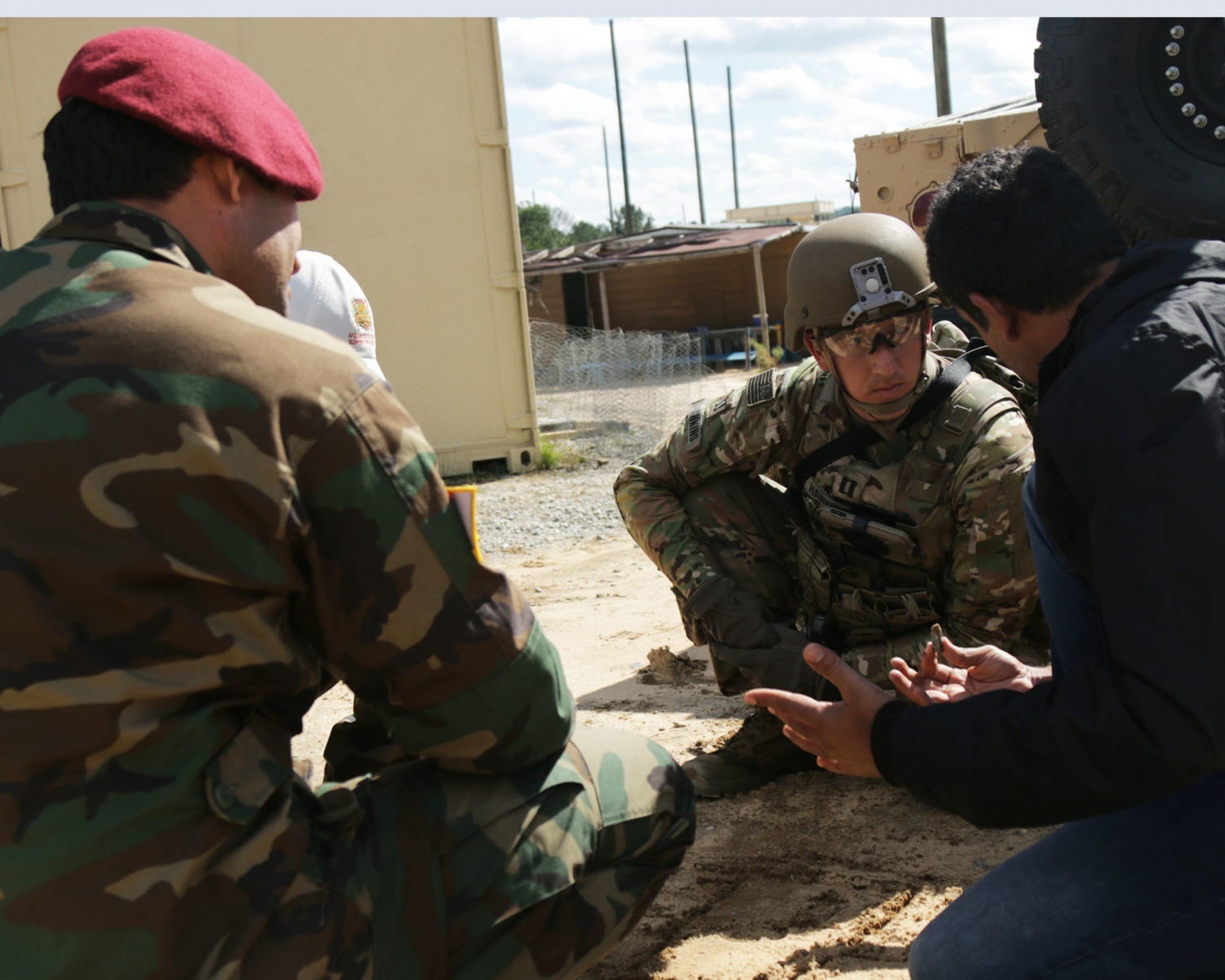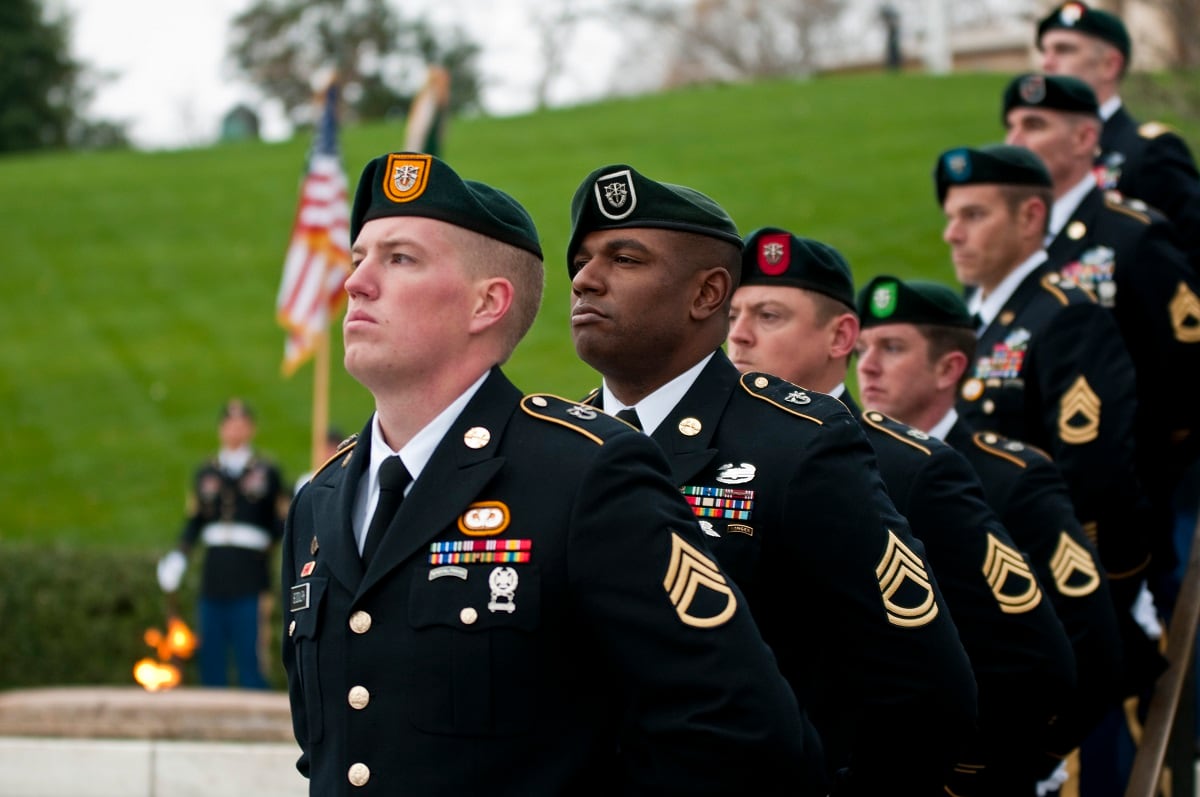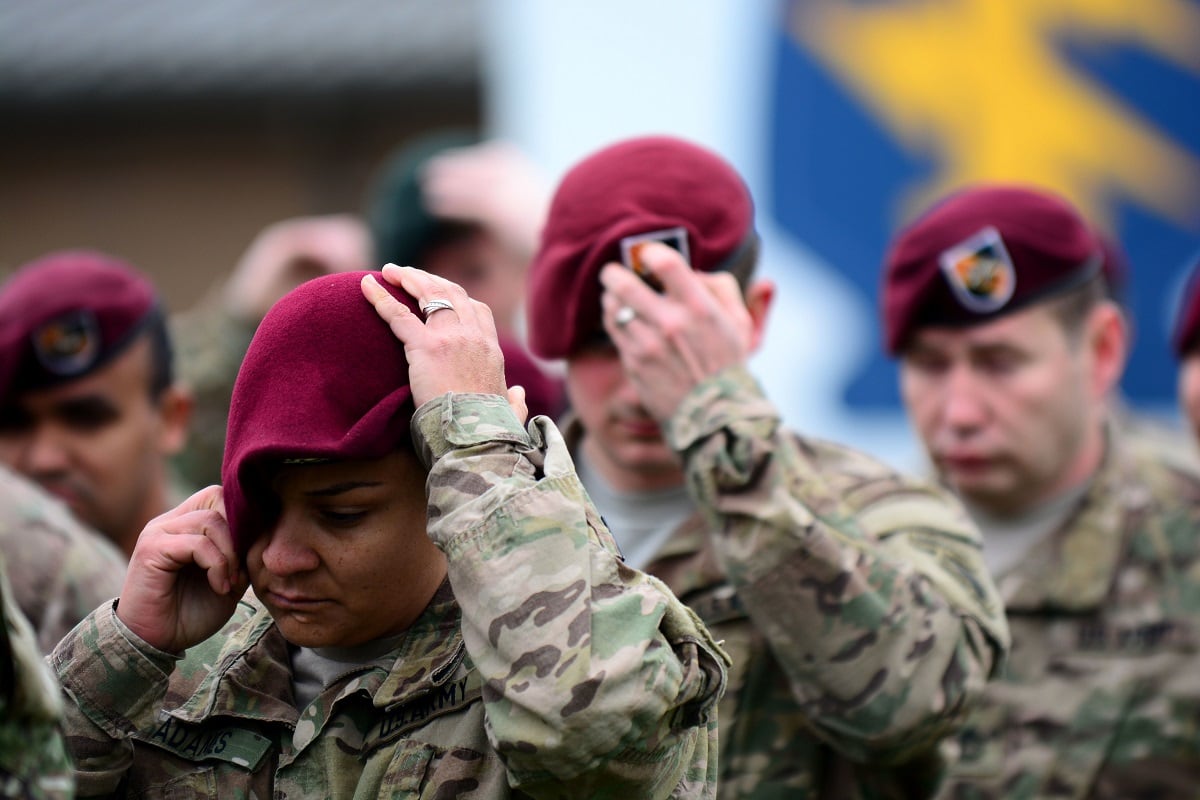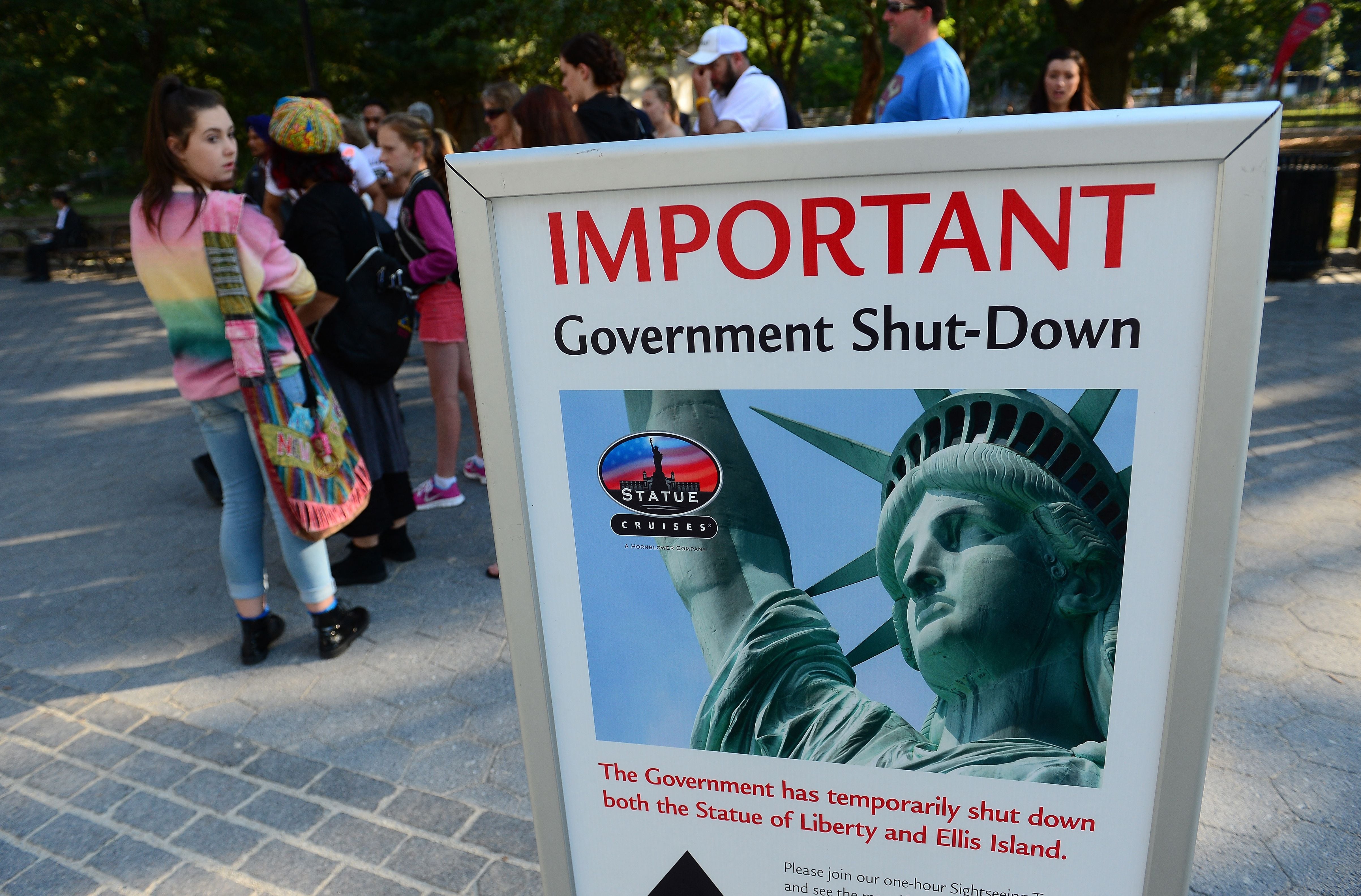It’s official: Seventeen years after adding another color to its array of distinctive headgear, the Army is getting another beret.
And, this time, the outcry came fast and hard.
Earlier this year, the Army began standing up a new organization devoted solely to training, advising and assisting the conventional forces of foreign partner nations. As the first class finished their stint at the Military Adviser Training Academy, word got around that soldiers in these new Security Force Assistance Brigades would be unlike most others — because they’d be getting a distinctive colored beret.
“With respect to the beret, this is a unique, niche capability — we’re going to be asking them to do a strategic mission — so I think it’s warranted,” acting Army Secretary Ryan McCarthy, a veteran of the 75th Ranger Regiment, which wears the tan beret, told Army Times.
A photo of a conspicuously green-looking beret, first posted by Soldier Systems Daily, made its way around social media in late October.
RELATED

It was supposed to be an olive-brown color based off the British Anglian Regiment’s brown infantry berets, Army Chief of Staff Mark Milley, a former team leader in 5th Special Forces Group, told Army Times.
But there was a big problem, a former Ranger, Green Beret, and Special Forces historian told Army Times on Nov. 7.
“It was green,” retired Sgt. 1st Class Greg Walker said. “That’s a well-worn, sun-bleached green beret.“
Current and former Special Forces soldiers flooded Army Times with social media comments and emails, protective of the elite community’s legacy as the original wearers of a colored beret.
‘The first’
While it’s true that President John F. Kennedy authorized Special Forces soldiers to wear a rifle green beret in 1961, the soldiers had been wearing them off the books for the better part of the previous decade — and they weren’t the first to do that.
It turns out that all of the Army’s berets — from green to maroon to black, and the tan that replaced it — were first worn as an unauthorized morale booster.
The first instance of a colored beret in the U.S. Army was in 1943, Army Historical Foundation chief historian Matt Seelinger told Army Times.
The commander of the British 1st Airborne Corps gifted the paratroopers of the 509th Parachute Infantry Battalion — now a regiment, the unit is now part of 4th Brigade Combat Team, 25th Infantry Division — the deep red berets worn by British airborne soldiers.
“It was a relatively small part of the American airborne contingent,” Seelinger said, and they stopped wearing them after the war.
By 1954, American Special Forces soldiers had adopted an unauthorized beret of their own — green, like the British Commandos who’d begun wearing them during World War II.
They were technically banned from wearing them in official settings, Army Historical Foundation intern Matt Fitzsimmons told Army Times, until Kennedy paid a visit to the U.S. Army Special Warfare Center and School at Fort Bragg, North Carolina.
There, legend has it, Kennedy caught a glimpse of then-Brig. Gen. William Yarborough, SWCS’ first commandant, in his green cover and decided to make it the first authorized beret.
“He, too, believed that the Green Berets needed something to set them apart from other soldiers, and perceived the green beret as a mark of excellence and pride for the Special Forces soldiers,” Fitzsimmons said.

‘Getting out of hand’
It wasn’t long before another beret came along.
”The next part of this saga is, in the late ‘60s, the armored and cavalry forces started wearing black berets,” Seelinger said, and, as before, they weren’t authorized.
And in 1973, paratroopers in the 82nd Airborne Division brought back the maroon beret, though it still wasn’t an official uniform item. Two years later, when the Army stood up the first Ranger battalions, the black beret was officially authorized for Rangers and airborne.
In 1978, then-Army Chief of Staff Gen. Bernard Rogers “laid down the law,” Seelinger said, authorizing only green for Special Forces.
“Because it was kind of getting out of hand with all of these different colored berets,” Seelinger said. “Cavalry, not only were they wearing black berets, they were wearing stetsons.”
A year later, Rogers’ successor, Gen. Edward Meyer, brought back the Ranger black beret for good. In 1981, he officially the legitimized the airborne maroon beret, as well.
Things chugged along smoothly for the better part of the next two decades, until then-Chief of Staff Gen. Eric Shinseki flipped the table in 2000 and authorized the black beret for all soldiers.
The Rangers then switched to a tan beret, hearkening back to World War II British Special Air Service headgear.
Not your average Joes
Cut to late 2017, when photos of an olive-green beret, along with an arrowhead unit patch and “combat adviser” tab stirred outrage.
Detractors felt that SFAB soldiers hadn’t “earned” the right to wear a beret, much less one that was any shade of green.
“The green beret was the first elite unit beret for the U.S. Army,” Walker said. “The airborne has always been considered as an elite unit, and so when they petitioned for the maroon beret, that was acknowledged by the Army.”
The same went for the black beret, he added.

But what makes a unit elite? What makes a beret earned?
Special Forces and 75th Ranger Regiment soldiers endure grueling selection processes, and their berets let everybody know that. And while airborne units are considered a cut above other infantry brigade troops, there’s no crucible to earn one.
In fact, the only prerequisite for the maroon beret is being assigned to a billet in an airborne unit — and that can be everything from a human resources specialist in the 82nd Airborne to a public affairs officer with U.S. Army Special Operations Command, itself considered an airborne organization.
The parachutist badge is the true mark of the paratrooper, Walker said, not the beret. And jump school is not a requirement in an airborne unit.
For some, he added, it’s less about what one has to do to earn a beret, and more about its historical significance. Until now, Army berets could be traced back to combat-borne distinctions worn without permission by units who wanted to set themselves apart.
“What this is, is the beret by Big Army,” he said of the SFABs. “Because they have to be, again, a little bit different than the regular Army — how do we entice them away from their conventional units?”
McCarthy, who served in the 75th Ranger Regiment when the unit went from black berets to tan, reinforced that SFAB volunteers are second command-qualified officers and senior NCOs with combat experience, hand-picked by the chief of staff and sergeant major of the Army.
“These are not average individuals,” McCarthy said. “These are exceptionally talented officers and NCOs.”
He went to Fort Benning, Georgia, to visit in September, he added, as the first class at the Military Training Adviser Academy wrapped up.
“It is a niche capability, but we’re not trying to mirror — if you will — other units,” McCarthy said. “For as long as I’m in this seat, I’m going to do everything I can do incentivize, organize and equip the best we have to do this mission.”
For the Special Forces community, Walker said, it’s important to be mature about it.
“Stop attacking the young soldiers and the veteran soldiers who are volunteering for the SFAB,” he said. “Stop going after them, stop making fun of them. The fight is not with them, it’s over this issue.”
In the end, Walker said, he believes the Special Forces community will embrace the addition of advisers for conventional troops, on one condition.
“As long as Gen. Milley puts out a dark brown beret, that’ll smooth it over. With the exception that now the Rangers will be ticked off,” he joked.
Meghann Myers is the Pentagon bureau chief at Military Times. She covers operations, policy, personnel, leadership and other issues affecting service members.





